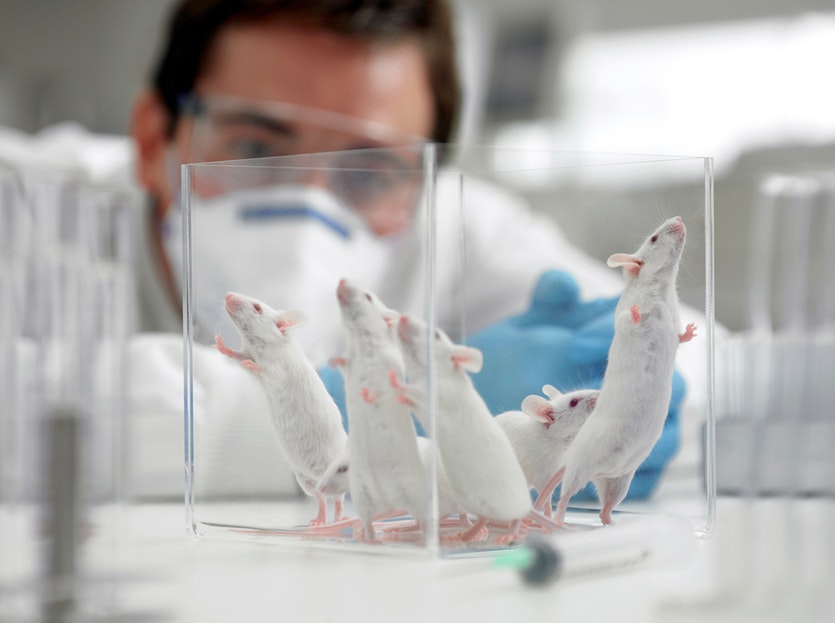Salt Lake County Mayor Jenny Wilson issued Public Health Order 2020-12 mandating that masks be worn by “any individual within Salt Lake County who is age two and over and able to medically or psychologically tolerate a face covering shall be required to wear a face covering that completely covers the nose and mouth in public areas where consistent social distancing of at least six feet is not possible, reasonable, or prudent.” (1) This was an extension of Public Health Order 2020-11 made on June 26, 2020. The updated order extends to August 20, 2020.
- In Wilson’s letter to Governor Herbert requesting the mask mandate for Salt Lake County, she sites two studies. “Recent studies confirm the effectiveness of face coverings, reducing the transmission risk 75%- 82%. A study conducted by a team of scientists in Hong Kong [Study #1] found the rate of non-contact transmission dropped by as much as 75% when masks were used. In another study published by The Lancet [Study #2], transmission of COVID-19 without a face covering or respirator (like an N95 mask) was 17.4%, while that fell to 3.1% with a covering worn, reducing the risk by 82%.” (2) She misinterpreted the findings from these studies. Actually, the findings do not support a county-wide mask mandate.
- Study #1 Surgical Mask Partition Reduces the Risk of Non-contact Transmission in a Golden Syrian Hamster Model for Coronavirus Disease 2019 (COVID-19). Researchers infected hamsters with COVID-19 and placed them in a closed setting with uninfected hamsters. The uninfected hamsters were exposed to the symptomatic infected hamster for 96 hours. The researchers failed to give the distance between cages from the infected to the uninfected hamsters. But from the picture below (see Figure 1), it appears to be less than 6 feet distance.
The study examined the transmission rate between hamsters when 1) no protective surgical mask material was available; 2) the protective side of the mask faced the infected hamster; and 3) the protective side of the mask faced the uninfected hamster. Non-contact transmission occurred in 66.7% of unprotected uninfected hamsters after exposure to infected hamster for up to 96 hours. Non-contact transmission rate was 16.7% if the protective side of mask material was facing the infected hamster and 33% when the protective side was facing the uninfected hamster. It’s important to note that the researchers stated, “The use of surgical mask partition to protect naïve [uninfected] hamsters reduced the transmission rate to 33.3%, although this did not reach statistical significance.” (3) (emphasis mine).

- Limitations with this study – The researchers stated “our findings on the use of surgical mask partition for protection against non-contact transmission in this hamster model supported the use of community-wide masking to reduce the amount of virus shedding from the asymptomatically infected patients and to protect susceptible individuals.” (4) This is an inaccurate conclusion! Instead, their study confirmed something that nearly everyone agrees upon. Those who are infected with COVID-19 AND are symptomatic should wear a mask to reduce transmission by 75%. Those that are in close contact with infected people may benefit from wearing a mask, BUT the findings were not statistically significant. This study in no way supports a community-wide mask mandate. People in the community are not in prolonged contact (up to 96 hours) with symptomatic infected people in a closed setting. Community interaction tends to be much shorter in duration and most often symptomatic COVID-19 patients are quarantining themselves.
- Study #2 Physical Distancing, Face Masks, and Eye Protection to Prevent Person-to-Person Transmission of SARS-CoV-2 and COVID-19: A Systematic Review and Meta-Analysis. It’s important to note at the outset that this study was funded by the World Health Organization. Typically, meta-analyses can be among the most statistically robust studies because researchers gather findings across numerous studies and conduct statistical analyses on those findings to see if a significant pattern or association can be found. In this particular study, the researchers conducted a “systematic review and meta-analysis to investigate the optimum distance for avoiding person-to-person virus transmission and to assess the use of face masks and eye protection to prevent transmission of viruses.”(5)
- Researchers stated, “It has not been solved if SARS-CoV-2 might spread through aerosols from respiratory droplets, so far, air sampling has found virus RNA in some studies but not in others.”(6) In other words, it is not conclusive whether this virus is spread through droplets.
- Researchers stated, “The aim of our systematic review was for quantitative assessment to ascertain the physical distance, associated with reduced risk of acquiring infection when caring for an individual infected with SARS-CoV-2, SARS-CoV, or MERS-CoV. Our definition of face masks including surgical masks and N95 respirators.”(7) The aim of this study does not address community transmission, but rather the risk of transmission for a caregiver of an infected person. It is unclear why this study was given as evidence to support a community-wide mask mandate. It fails to address community spread.
- Mayor Wilson stated in her letter “study published by The Lancet, transmission of COVID-19 without a face covering or respirator (like an N95 mask) was 17.4%, while that fell to 3.1% with a covering worn, reducing the risk by 82%.” The study actually reports that the estimated effect of 17.4% chance of transmission with no face mask versus a 3.1% chance of transmission when wearing a mask had low certainty. What does this mean? The researchers state, “Low certainty (our confidence in the effect estimate is limited; the true effect could be substantially different from the estimate of the effect)”.(8) In other words, they had minimal confidence in a tangible difference between the chance of transmission when wearing a mask vs not wearing a mask. Mayor Wilson was, at best, grossly inaccurate in her statement or, at worst, intentionally deceptive.
- As often happens, policy makers and the Main Stream Media (MSM) can twist results to support their course of action. Unfortunately, it appears that Mayor Wilson fell into this trap. The researchers in this study state, “our findings continued to support the ideas not only that masks in general are associated with a large reduction in risk of infection from SARS-CoV-2, SARS-CoV, and MERS-CoV but also that N95 or similar respirators might be associated with a larger degree of protection from viral infection than disposable medical masks or reusable multilayer (12-16 layer) cotton masks. Nevertheless, in view of the limitations of these data, we did not rate the certainty of effect as high. Our findings accord with those of a cluster randomized trial showing a potential benefit of continuous N95 respirator use over medical masks against seasonal viral infections [McIntyre et al., 2013].” (9) (emphasis mine) If policy makers don’t consider the “nevertheless” statement in this article (which essentially renders the researchers’ findings insignificant), they will mistakenly tout the results as evidence for community-wide mask mandates. It is just the opposite. In fact, the researchers admit that their findings are consistent with McIntyre et al. (2013), which found that N95 masks were significantly better at preventing respiratory symptoms than surgical masks.(10)
- Researchers stated, “For health-care workers and administrators, our findings suggest that N95 respirators might be more strongly associated with protection from viral transmission than surgical masks. Both N95 and surgical masks have a stronger association with protection compared with single-layer masks.”(11) Their findings are in relation to health-care workers and those in close contact with a COVID-19 person, which does not apply to community interaction.
- Researchers stated, “a stronger association with protection from COVID-19, SARS, or MERS with N95 or similar respirators were used versus other face masks.”(12)
- Limitations with this study – While the sample size of this meta-analysis was very large (25,281 people), nearly half (43%, 11,081 people) of the total cases were not “confirmed” but rather “probable” cases. Non-health care “confirmed” cases with community contact of the three types of infections mentioned above only represented 6.7% (1,739 people) of the total cases. Finally, the number of cases that apply to community transmission of COVID-19 was extremely small (0.07%, 20 people). Suddenly the impressive sample size is not impressive at all. In fact, it is disconcerting that this study was chosen as support for community-wide mandate for masks to prevent the spread of COVID-19.
Summary – Mayor Jenny Wilson provided two studies as supporting evidence for the importance of issuing a public health order to mandate masks for 1.1 million people for a duration of 55 days. A closer examination of these studies demonstrate that they DO NOT provide evidence to support community-wide mask mandates. Instead their findings are consistent with numerous other studies that show masks are effective in reducing the transmission of COVID-19 when worn by those infected and those caring for an infected person. Mayor Wilson touts up to 75% reduction in the risk of transmission from the use of masks, but this is misleading. The 75% reduction occurs when the symptomatic COVID-19 hamster has the protective part of the mask facing it, while the healthy hamster does not have a mask. This only supports what everyone already agrees on, symptomatic infected people should wear a mask. It’s important to highlight that there were no statistically significant findings from these studies demonstrating a reduction in transmission when masks are mandated for a community.
References
- Wilson, J and Edwards, G (2020, July 2). Public Health Order 2020-12. Salt Lake County Health Department. Retrieved from https://slco.org/globalassets/1-site-files/health/programs/covid/pho/pho12.pdf
- Wilson, J. (2020, June 23). Letter to Governor Herbert. Salt Lake County Mayor’s Office. Retrieved from https://slco.org/contentassets/f8b1edcfe2a841da83af2f69904978c6/request-to-governor-herbert.pdf
- Chan, J.F-W et. al (2020, May 30). Surgical Mask Partition Reduces the Risk of Non-contact Transmission in a Golden Syrian Hamster Model for Coronavirus Disease 2019 (COVID-19). Clinical Infectious Diseases, ciaa644, https://doi.org/10.1093/cid/ciaa644
- Ibid.
- Chu, D. K. et. al (2020, June 27). Physical Distancing, Face Masks, and Eye Protection to Prevent Person-to-Person Transmission of SARS-CoV-2 and COVID-19: A Systematic Review and Meta-Analysis.
- Ibid.
- Ibid.
- Wilson, J. (2020, June 23). Letter to Governor Herbert. Salt Lake County Mayor’s Office. Retrieved from https://slco.org/contentassets/f8b1edcfe2a841da83af2f69904978c6/request-to-governor-herbert.pdf
- Chu, D. K. et. al (2020, June 27). Physical Distancing, Face Masks, and Eye Protection to Prevent Person-to-Person Transmission of SARS-CoV-2 and COVID-19: A Systematic Review and Meta-Analysis.
- MacIntyre CR, Wang Q, Seale H, Yang P, Shi W, Gao Z, Rahman B, Zhang Y, Wang X, Newall AT, Heywood A, Dwyer DE. A randomized clinical trial of three options for N95 respirators and medical masks in health workers. Am J Respir Crit Care Med. 2013 May 1;187(9):960-6. doi: 10.1164/rccm.201207-1164OC. PMID: 23413265.
- Ibid.
- Ibid.

